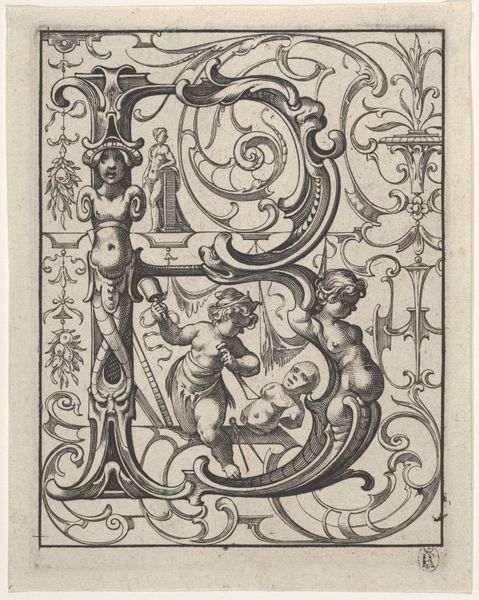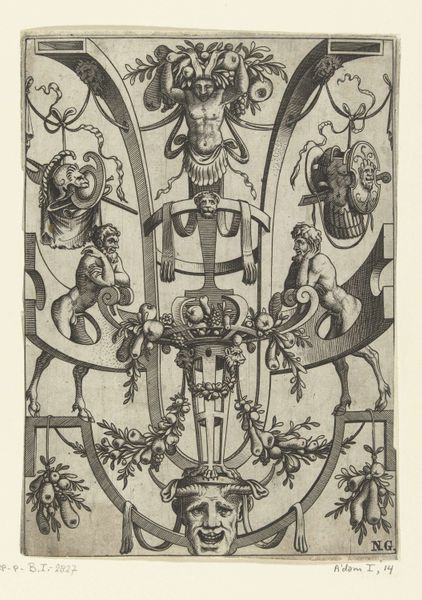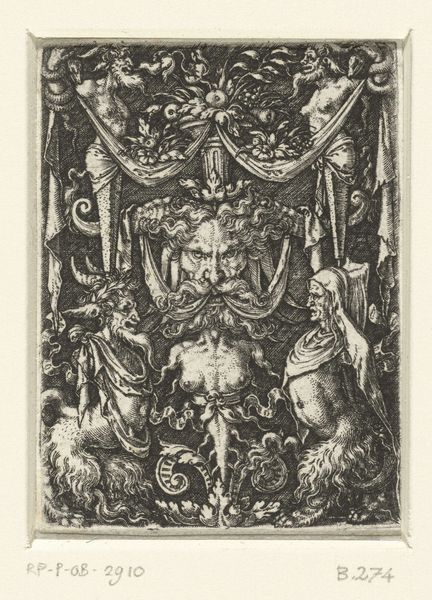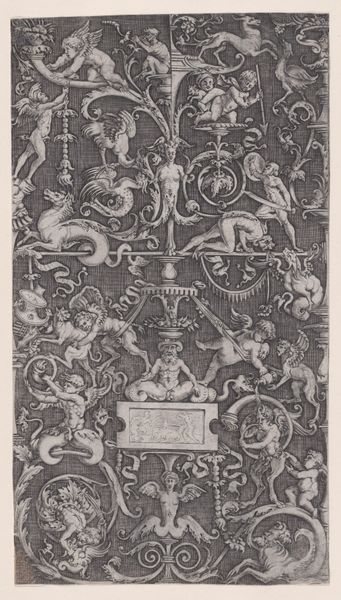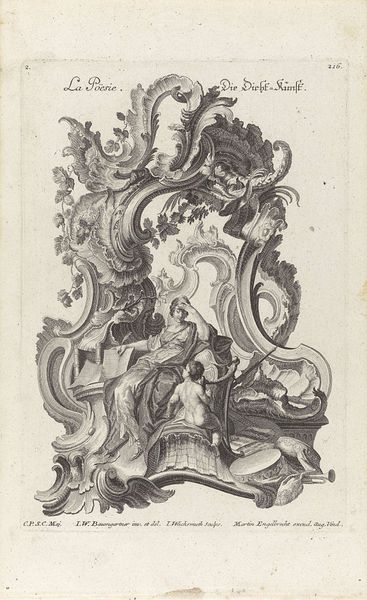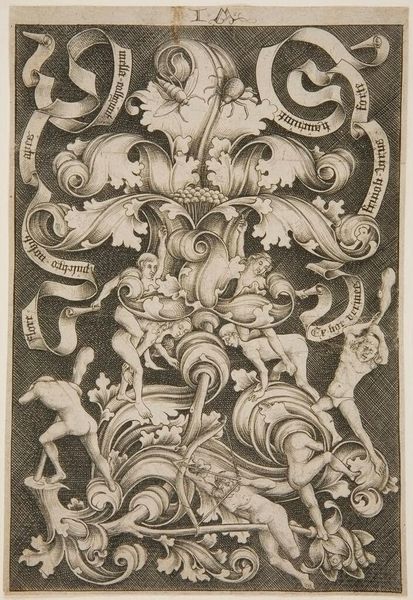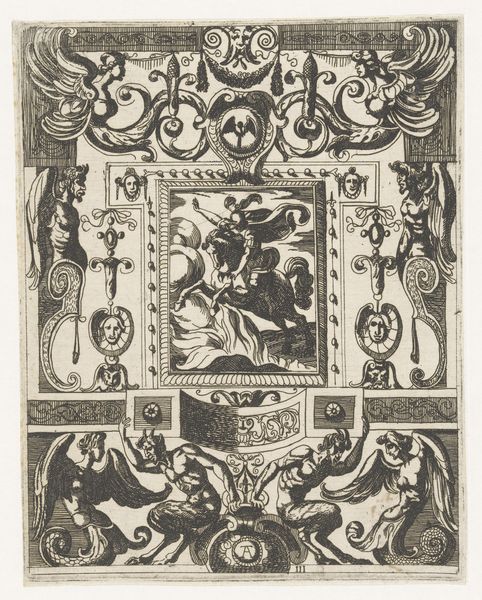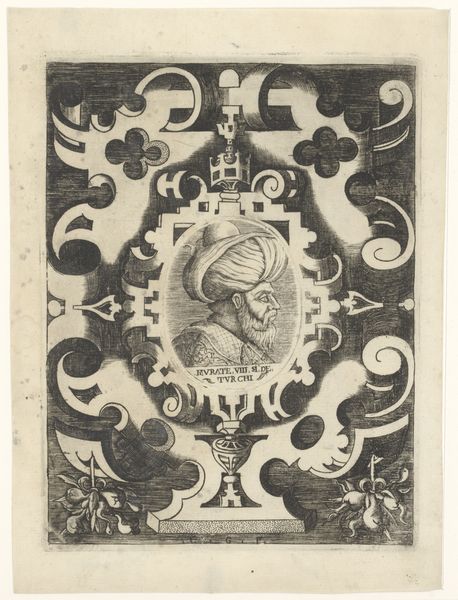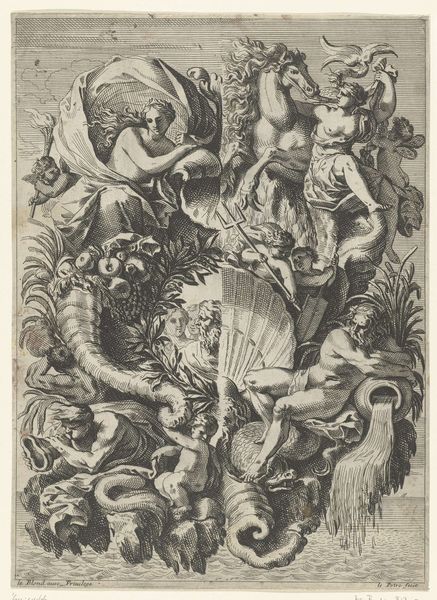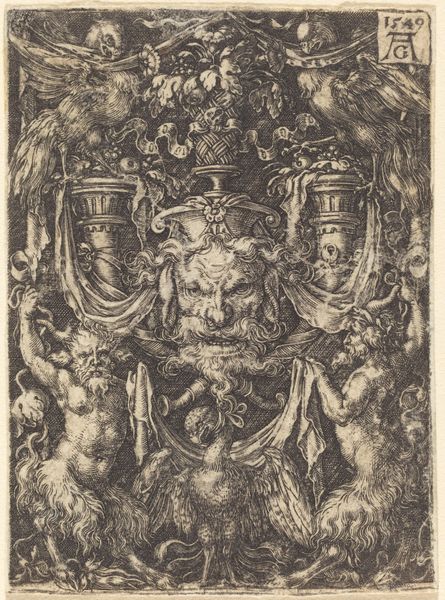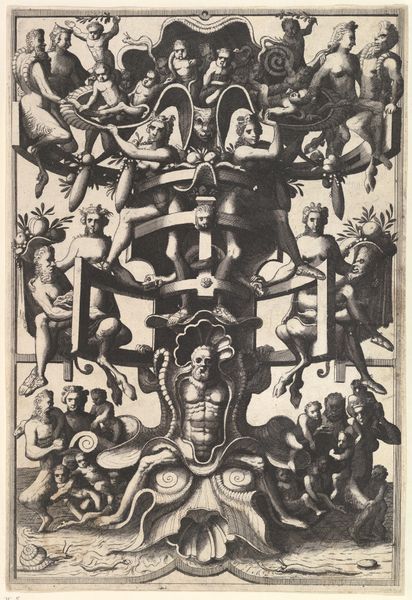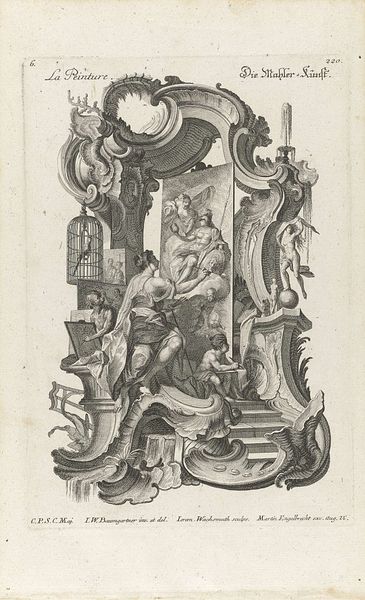
Ornament With Flower and Eight Wild Folk 1490 - 1500
0:00
0:00
drawing, ornament, print, paper, ink, engraving
#
drawing
#
ornament
#
pen drawing
# print
#
figuration
#
paper
#
11_renaissance
#
ink
#
linocut print
#
northern-renaissance
#
engraving
Dimensions: 205 × 136 mm
Copyright: Public Domain
Curator: Israhel van Meckenem's "Ornament With Flower and Eight Wild Folk," created between 1490 and 1500, is a captivating engraving. What are your initial thoughts on it? Editor: The level of detail is stunning! The swirling foliage, the miniature figures...it feels both incredibly intricate and slightly chaotic, almost teeming with a hidden narrative. Curator: It's a fascinating example of Northern Renaissance printmaking, made with ink on paper. Think about the labor involved in creating such detail with engraving tools, a painstaking process requiring immense skill. These prints were often disseminated widely, impacting visual culture on a large scale. Editor: Absolutely. And looking closer, I wonder about its intended function. An ornament suggests decoration, but these 'wild folk' introduce a peculiar social commentary, perhaps a playful subversion of courtly decorum. Where might it have been displayed, and for whom? Curator: Ornament prints like these provided patterns for various artisans: goldsmiths, carvers, even embroiderers. The market for such designs reflects the burgeoning artisan class, who used them as models to demonstrate their skill and attract commissions. It was a visual language of wealth and status they could translate. Editor: That’s intriguing. The visual vocabulary of this piece -- classical figures mixed with natural motifs -- feels very deliberate. The inclusion of insects like the wasp and snail introduces another layer; perhaps representing moral lessons or simply demonstrating Meckenem's skill at depicting diverse forms? Curator: Insects in art often symbolize transience or the brevity of life. Given the socio-political instability of the period, such a motif may hint at the fragility of power or status. We must also remember the cultural institutions shaping artistic practices at the time: the guilds, the rise of workshops and commissions. Editor: Examining it this way highlights the print's position between art object and industrial template, challenging definitions of fine art versus functional design. I'm left wondering if the original audiences even cared to make the same distinction as we do today? Curator: Exactly! By understanding both the means of production and socio-cultural background, we appreciate that Meckenem was not only a skilled artisan but also a critical observer and participant of his time. Editor: Agreed, viewing this work provides unique insight into the world of late 15th century Europe, both its aesthetic preferences and socio-economic structures. Curator: And seeing how materials, makers, and meanings intertwined in artworks, we understand just how integrated into daily life these objects really were.
Comments
No comments
Be the first to comment and join the conversation on the ultimate creative platform.
